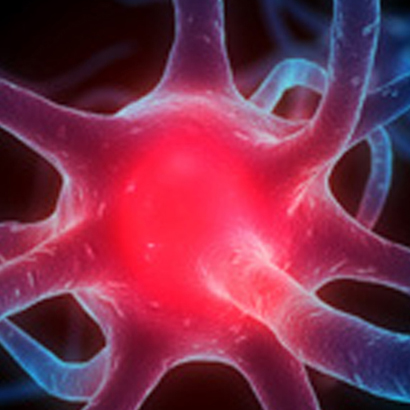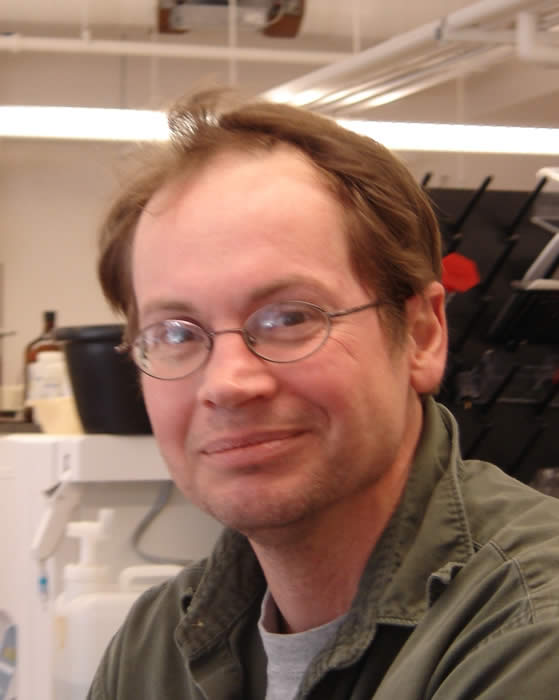Our Faculty and Staff
Kent Sugden
Professor and Chair of Chemistry and Biochemistry
Contact
- Office
- CHEM 306 & CHEM 116B
- Phone
- 406-243-4193
- kent.sugden@umontana.edu
- Office Hours
M, W: 11:00- 12:00 or by appointment.
Personal Summary
Kent received his Ph.D. in chemistry from Montana State University in 1992. He was an NIH postdoctoral research fellow at Dartmouth College from 1993-95, a research associate at Dartmouth College from 1995-97 and a research assistant professor at Dartmouth from 1997-99. Kent joined the University of Montana chemistry department in June of 1999 where he conducts research in bioinorganic chemistry.
Courses Taught
Biochem: BCH 380 and Laboratory Safety: CHMY 485.
Research Interests
My research focuses on the mechanism of interaction of metal complexes with biomolecules that can lead to the formation of genetic aberrations such as mutations, cancer and toxicity. My primary metal of interest is chromium, which in the +6 oxidation state, is a known human carcinogen. One method by which chromium may induce cancer in humans is through oxidative damage to nucleic acids. Our research group is focused on the mechanism by which this oxidative chemistry may occur and the resulting lesions that are formed on DNA that can give rise to carcinogenesis.
Selected Publications
Ø Gremaud, J.G., Martin, B.D., Sugden, K.D. 2010 Influence of substrate complexity on the diastereo-selective formation of spiroiminodihydantoin and guanidinohydantoin from chromate oxidation. Chem. Res. Tox. 23, 379-385. PMID: 20014751
Ø Bergquist, E.R., Fischer, R.J., Sugden, K.D. and Martin, B.D. 2009 Inhibition by methylated organoarsenicals of the respiratory 2-oxo-acid dehydrogenases. J. Organometallic Chem. 694, 973-980. PMID: 20161290
Ø Little, L.G. and Sugden K.D. 2009 Chromium-Induced DNA Damage and Repair” Metal Complex-DNA Interactions. N. Hadjiliadis and E. Sletten eds. John Wiley and Sons Ltd. pgs 463-489.
Ø Covino, J.J. and Sugden, K.D. 2008 “Chromate Genotoxicity” Advances in Molecular Toxicology, James Fishbein ed. Vol 2, pgs 1-24.
Ø Slade, P.G. Priestley, N.P. and Sugden, K.D. 2007 “Spiroiminodihydantoin as an Oxo-Atom Transfer Product of 8-oxo-2’-deoxyguanosine Oxidation by Chromium(V)” Organic Letters 9, 4411-4414. PMID: 17915881
Ø Martin, B.D., Schoenhard, J.A., Hwang, J-M., and Sugden, K.D. 2006 “Ascorbate is a Pro-oxidant in Chromium-Treated Human Lung Cells. Mutation Research. 610, 76-84. PMID: 16857421
Ø Hailer, M.K., Slade, P.G., Martin, B.D., and Sugden, K.D. 2005 “Nei-deficient Escherichia coli are differentially sensitized to chromate through the accumulation of the oxidized guanine lesion spiroiminodihydantoin” Chem. Res. Toxicol. 18, 1378-1383. PMID: 16167829
Ø Slade, P.G., Hailer, M.K., Martin, B.D. and Sugden, K.D. 2005 “Guanine-specific oxidation of double-stranded DNA by Cr(VI) and ascorbic acid forms spiroiminodihydantoin and 8-oxo-2’-deoxyguanosine”Chem. Res. Toxicol. 18, 1140-1149. PMID: 16022506
Ø Hailer M. K., Slade, P. G., Martin, B.D., Rosenquist, T.E., and Sugden, K.D. 2005 “Recognition of the Oxidized Lesions Spiroiminodihydantoin and Guanidinohydantoin in DNA by the Mammalian Base Excision Repair Glycosylases NEIL1 and NEIL2” DNA Repair, 4, 41-50. PMID: 15533836

